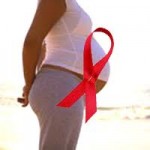 Researchers have identified a key step in the establishment of a pregnancy. The discovery may shed light on fertility disorders and diseases of the uterus, including endometrial cancer. At the start of each menstrual cycle, levels of the hormone estrogen begin to rise, which causes the uterine lining to grow and thicken. When the ovary releases an egg, levels of another hormone, progesterone, increase. Higher progesterone levels put the brakes on the estrogen-driven growth of the uterine lining, allowing the lining to mature and egg implantation to take place. Because of this function, progesterone is sometimes given to women to treat infertility and prevent premature birth. However, it carries some unpleasant side effects. A greater understanding of how progesterone works could lead to better treatments. It could also shed light on disorders such as endometrial cancer and endometriosis, which is marked by uncontrolled growth of the uterine lining. To clarify how progesterone stops the growth of the uterine lining, the study's first author, Dr. Quanxi Li of the University of Illinois at Urbana-Champaign, led a group of researchers from several institutions. Their findings were published in the February 28, 2011, issue of Science. The team focused on the role of a protein called Hand2 in halting the growth of the uterine lining. They had previously found that blocking the progesterone receptor decreased Hand2 expression in uterine cells, indicating a link between Hand2 and progesterone.In their new study, the team genetically engineered mice to lack Hand2 in the uterus, and then gave them progesterone. They then stimulated uterine lining growth with estrogen. In normal mice, progesterone prevents the uterine lining from growing. In the mice without Hand2, however, the lining grew in spite of the progesterone treatment. The scientists found that uterine cells beneath the lining express Hand2 during egg implantation. Further experiments revealed that estrogen stimulates the production of molecules called growth factors, which cause the uterine lining to grow. High levels of Hand2, brought on by progesterone, stop the production of these growth factors. Therefore, the uterine lining stops growing, allowing egg implantation. The discovery of Hand2's role in halting growth of the uterine lining may spur development of treatments for diseases like endometriosis and endometrial cancer. "This information helps us understand how the interplay of hormones prepares the uterus to host and support the embryo as it grows," says Dr. Milan Bagchi, a senior author of the study. "Our next priority will be to examine whether Hand2 plays a critical role in the human uterus as well." Related Links: Pregnancy Infertility Endometriosis Source: National Institutes of Health
Researchers have identified a key step in the establishment of a pregnancy. The discovery may shed light on fertility disorders and diseases of the uterus, including endometrial cancer. At the start of each menstrual cycle, levels of the hormone estrogen begin to rise, which causes the uterine lining to grow and thicken. When the ovary releases an egg, levels of another hormone, progesterone, increase. Higher progesterone levels put the brakes on the estrogen-driven growth of the uterine lining, allowing the lining to mature and egg implantation to take place. Because of this function, progesterone is sometimes given to women to treat infertility and prevent premature birth. However, it carries some unpleasant side effects. A greater understanding of how progesterone works could lead to better treatments. It could also shed light on disorders such as endometrial cancer and endometriosis, which is marked by uncontrolled growth of the uterine lining. To clarify how progesterone stops the growth of the uterine lining, the study's first author, Dr. Quanxi Li of the University of Illinois at Urbana-Champaign, led a group of researchers from several institutions. Their findings were published in the February 28, 2011, issue of Science. The team focused on the role of a protein called Hand2 in halting the growth of the uterine lining. They had previously found that blocking the progesterone receptor decreased Hand2 expression in uterine cells, indicating a link between Hand2 and progesterone.In their new study, the team genetically engineered mice to lack Hand2 in the uterus, and then gave them progesterone. They then stimulated uterine lining growth with estrogen. In normal mice, progesterone prevents the uterine lining from growing. In the mice without Hand2, however, the lining grew in spite of the progesterone treatment. The scientists found that uterine cells beneath the lining express Hand2 during egg implantation. Further experiments revealed that estrogen stimulates the production of molecules called growth factors, which cause the uterine lining to grow. High levels of Hand2, brought on by progesterone, stop the production of these growth factors. Therefore, the uterine lining stops growing, allowing egg implantation. The discovery of Hand2's role in halting growth of the uterine lining may spur development of treatments for diseases like endometriosis and endometrial cancer. "This information helps us understand how the interplay of hormones prepares the uterus to host and support the embryo as it grows," says Dr. Milan Bagchi, a senior author of the study. "Our next priority will be to examine whether Hand2 plays a critical role in the human uterus as well." Related Links: Pregnancy Infertility Endometriosis Source: National Institutes of Health
 Pregnant women who are unaware that they have HIV miss the chance for drug treatment that can benefit not only their own health, but could also prevent them from transmitting the virus to their infants. When HIV is not diagnosed until women go into labor, their infants are usually treated soon after birth with the anti HIV drug zidovudine (ZDV), to prevent the infants from becoming infected with the virus.
Pregnant women who are unaware that they have HIV miss the chance for drug treatment that can benefit not only their own health, but could also prevent them from transmitting the virus to their infants. When HIV is not diagnosed until women go into labor, their infants are usually treated soon after birth with the anti HIV drug zidovudine (ZDV), to prevent the infants from becoming infected with the virus.
Now, a National Institutes of Health study has found that adding one or two drugs to the standard ZDV treatment can reduce the chances by more than 50 percent that an infant will develop an HIV infection.
The study results were presented at the Conference on Retroviruses and Opportunistic Infections, in Boston. The study was conducted at research hospitals in Brazil, South Africa, Argentina, and the United States, under contract to the NIH’s Eunice Kennedy Shriver National Institute of Child Health and Human Development (NICHD).
An estimated one fifth of people in the United States who have HIV are unaware that they harbor the virus. From 100 to 200 infants are born with HIV in the United States each year, many to women who either were not tested in early pregnancy or who did not receive treatment during pregnancy. Internationally, estimates of HIV testing vary, with only 21 percent of pregnant women in low and middle income countries having been tested for HIV during pregnancy.
"To reduce mother-to-child HIV transmission, it's best to begin antiretroviral treatment during pregnancy," said Heather Watts, M.D., a medical officer in NICHD and an author of the study. "However, when treatment during pregnancy isn’t possible, our results show that adding one or two drugs to the current regimen provides another important means to reduce the chance for mother-to-child HIV transmission."
At the 19 participating research sites, the NICHD/ HIV Prevention Trials Network 040 study evaluated 1,684 infants born to women whose HIV infections were not diagnosed until they were in labor. The infants were randomly assigned to three groups: those receiving the standard 6 weeks of therapy with ZDV, those receiving 6 weeks of ZDV plus 3 doses of nevirapine (NVP) during the first week of life, and those receiving 6 weeks of ZDV plus two weeks of lamivudine (3TC) and nelfinavir (NFV). The study results showed that treatment with the two and three drug regimens reduced HIV transmission by more than 50 percent.
"Our results showed conclusively that the two and three drug regimens are superior to the standard treatment with zidovudine," said study chair Karin Nielsen-Saines, M.D., clinical professor of pediatrics at the David Geffen School of Medicine at the University of California at Los Angeles.
To read the entire NIH press release, click HERE.
 Maternal cigarette smoking in the first trimester was associated with a 20 to 70 percent greater likelihood that a baby would be born with certain types of congenital heart defects, according to a study by the Centers for Disease Control and Prevention. Congenital heart defects are the most common type of birth defects, contributing to approximately 30 percent of infant deaths from birth defects annually.
Maternal cigarette smoking in the first trimester was associated with a 20 to 70 percent greater likelihood that a baby would be born with certain types of congenital heart defects, according to a study by the Centers for Disease Control and Prevention. Congenital heart defects are the most common type of birth defects, contributing to approximately 30 percent of infant deaths from birth defects annually.
The study found an association between tobacco exposure and certain types of defects such as those that obstruct the flow of blood from the right side of the heart into the lungs (right ventricular outflow tract obstructions) and openings between the upper chambers of the heart (atrial septal defects). The study is in the Feb. 28 issue of the journal Pediatrics.
"Women who smoke and are thinking about becoming pregnant need to quit smoking and, if they're already pregnant, they need to stop," said CDC Director Thomas R. Frieden, M.D., M.P.H. "Quitting is the single most important thing a woman can do to improve her health as well as the health of her baby."
Based on the findings of this and other studies, eliminating smoking before or very early in pregnancy could prevent as many as 100 cases of right ventricular outflow tract obstructions and 700 cases of atrial septal defects each year in the United States. For atrial septal defects alone, that could potentially save $16 million in hospital costs.
"Successfully stopping smoking during pregnancy also lowers the chances of pregnancy complications such as preterm delivery and that an infant will have other complications such as low birth weight," said Adolfo Correa, M.D., Ph.D., medical officer in CDC's National Center on Birth Defects and Developmental Disabilities.
The findings from the study are based on a large population-based case-control study of congenital heart defects conducted in the United States.
Congenital heart defects are conditions present at birth that decrease the ability of the heart to work well, which can result in an increased likelihood of death or long-term disabilities. They affect nearly 40,000 infants in the United States every year.
Click HERE to view the publication.
 The U.S. Food and Drug Administration on Feb. 4, 2011, approved Makena (hydroxyprogesterone caproate) injection to reduce the risk of preterm delivery before 37 weeks of pregnancy, in pregnant women with a history of at least one spontaneous preterm birth. The drug is not intended for use in women with a multiple pregnancy, such as a twin pregnancy, or other risk factors for preterm birth.
The U.S. Food and Drug Administration on Feb. 4, 2011, approved Makena (hydroxyprogesterone caproate) injection to reduce the risk of preterm delivery before 37 weeks of pregnancy, in pregnant women with a history of at least one spontaneous preterm birth. The drug is not intended for use in women with a multiple pregnancy, such as a twin pregnancy, or other risk factors for preterm birth.
The FDA approved Makena under the agency’s accelerated approval regulations that allow promising drugs to be approved based on a surrogate endpoint benefit (here, reducing the risk of delivery before 37 weeks of pregnancy) that is reasonably likely to predict a clinical benefit.
Under these regulations, the manufacturer must conduct additional studies after the product is approved to demonstrate that the drug does, in fact, have a clinical benefit. An international trial is ongoing to learn if there is also improvement in the outcome of babies born to women given Makena. Such outcomes include reducing the number of babies who do not survive or who suffer serious health problems shortly after birth.
“Preterm birth is a significant public health issue in the United States,” said Sandra Kweder, M.D., deputy director of the Office of New Drugs in the FDA’s Center for Drug Evaluation and Research. “This is the first drug approved by the FDA that is indicated to specifically reduce this risk.” A health care provider would give Makena once a week by injection into the hip. Treatment should begin at 16 weeks and no later than 21 weeks of pregnancy.
The FDA reviewed data on the safety and effectiveness of Makena in a multicenter randomized double-blind clinical trial. The study included 463 women 16 to 43 years of age who were pregnant with a single fetus and had a history of a prior spontaneous preterm birth. Among women treated with Makena, 37 percent delivered early (before 37 weeks) as compared with 55 percent of women in the control group.
A separate study evaluated the development of children born to mothers enrolled in the controlled trial. In this study, children ages 2.5 years to 5 years reached similar developmental targets, regardless of the mother’s treatment. The confirmatory study that is ongoing will be followed by a similar infant follow-up study, to be completed about 2018. That study is expected to include 580-750 infants, depending on the number of study sites and mothers willing to participate.
The most common side effects reported with Makena included pain, swelling, or itching at the injection site; hives, nausea and diarrhea. Serious adverse reactions were rare; there was a single report each of blood clot in the lungs (pulmonary embolism) and an infection at the injection site.
The FDA originally approved hydroxyprogesterone caproate under the trade name Delalutin in 1956 for use in pregnant women. The approved indications include threatened miscarriage. The original manufacturer requested the withdrawal of Delalutin from the market in 2000 for reasons unrelated to safety.
Consumers and health care professionals are encouraged to report adverse events from medications to the FDA's MedWatch program at 800-FDA-1088 or online at www.fda.gov/medwatch/how.htm1.
Source: Food and Drug Administration
Recently, AHRQ has become more active in soliciting public input to the review process, and today they posted for public comment the key questions and background materials for a review that will be conducted soon, Comparative Effectiveness of Nitrous Oxide for the Management of Labor Pain.
Nitrous oxide is commonly available to women for labor pain relief in many other countries, but is almost completely unavailable as an option for women in the United States. The comparative effectiveness review on this topic will examine the available evidence and look at specific questions such as its effectiveness, adverse effects, effects on women’s satisfaction with their birth experience and pain management, and health system factors influencing whether nitrous oxide is available to women who would like that option.
The public is invited to comment on this list of key questions to be addressed by the review, and can also review some background information describing the current use of nitrous oxide in the United States, the nature of the available literature, and the outcomes the review will examine.
Public comment is being accepted through December 8, 2010 via this online form; the site also provides a document to download and submit by mail if you prefer.
This project is of particular interest to me because of my work with the AHRQ Evidence-based Practice Center conducting this review. I have been involved with this topic in its preliminary stages by helping to examine the literature and writing up background information to inform the feasibility and potential impact of a full comparative effectiveness review. I will continue to be involved with the project team when the full review begins, and of course will update here when the review is completed and released.
For additional discussion of nitrous oxide for labor pain relief, please see our 2008 post with guest commentary from Judith Rooks, who has been advocating for expanded access to this choice for U.S. women.
 A study by researchers at the National Institutes of Health (NIH) and the University of Oxford supports the widespread belief that stress may reduce a woman's chance of becoming pregnant. The study is the first of its kind to document, among women without a history of fertility problems, an association between high levels of a substance that is indicative of stress and a reduced chance of becoming pregnant.
A study by researchers at the National Institutes of Health (NIH) and the University of Oxford supports the widespread belief that stress may reduce a woman's chance of becoming pregnant. The study is the first of its kind to document, among women without a history of fertility problems, an association between high levels of a substance that is indicative of stress and a reduced chance of becoming pregnant.
The researchers showed that women who had higher levels of alpha-amylase were less likely to get pregnant than were women with lower levels of the substance. Alpha-amylase is secreted into saliva by the parotid gland, the largest of the salivary glands. Although alpha-amylase digests starch, in recent years it has been used as a barometer of the body's response to physical or psychological stress. The substance is secreted when the nervous system produces catecholamines, compounds that initiate a type of stress response.
Researchers tracked the ovulation cycles of 274 English women ages 18-40 who were trying to conceive. On the sixth day of their cycles, each woman collected a sample of her saliva, which was subsequently tested for alpha-amylase. The researchers found that, all other factors being equal, women with high alpha-amylase levels were less likely to conceive than were women with low levels. A larger study is currently underway to confirm these findings. If these finding hold up, health providers will need to find appropriate ways to help women alleviate stress while trying to conceive.
To view the NIH Press release, click here.

 In July, a commentary in the journal Pediatrics discussed several new studies that have increased our knowledge of the association between tobacco smoke exposure and childhood morbidity and mortality. Collectively, these new reports demonstrate that in several categories of chronic childhood illness (asthma, obesity, and mental health disorders) there are small-to-moderate independent associations with tobacco smoke exposure either during pregnancy or in the postnatal period. A moderate association with tobacco smoke and dental caries (cavities) in children was also reported. One study found an association between smoke exposure of pregnant women and subsequent childhood overweight in offspring. What was especially significant about the latter study was the fact that it was conducted in pregnant women who did NOT smoke but were exposed to smoke from the father. Studies looking at mothers who smoke continue to show an association to their children's mental health status that affects their children's ability to participate in social activities and make friends.
In July, a commentary in the journal Pediatrics discussed several new studies that have increased our knowledge of the association between tobacco smoke exposure and childhood morbidity and mortality. Collectively, these new reports demonstrate that in several categories of chronic childhood illness (asthma, obesity, and mental health disorders) there are small-to-moderate independent associations with tobacco smoke exposure either during pregnancy or in the postnatal period. A moderate association with tobacco smoke and dental caries (cavities) in children was also reported. One study found an association between smoke exposure of pregnant women and subsequent childhood overweight in offspring. What was especially significant about the latter study was the fact that it was conducted in pregnant women who did NOT smoke but were exposed to smoke from the father. Studies looking at mothers who smoke continue to show an association to their children's mental health status that affects their children's ability to participate in social activities and make friends.
 Fish and shellfish are an important part of a healthy diet. They contain protein and other essential nutrients, are low in saturated fat, and contain omega-3 fatty acids. A well-balanced diet that includes a variety of seafood can contribute to heart health and children’s proper growth and development.
Fish and shellfish are an important part of a healthy diet. They contain protein and other essential nutrients, are low in saturated fat, and contain omega-3 fatty acids. A well-balanced diet that includes a variety of seafood can contribute to heart health and children’s proper growth and development.
However, nearly all seafood contains traces of mercury. For most people, the risk from mercury in fish is not a health concern. Yet, some fish and shellfish contain higher levels of mercury that may harm an unborn baby or young child’s developing nervous system and this depends on the amount of seafood eaten and the levels of mercury in these foods.
The Food and Drug Administration (FDA) and the Environmental Protection Agency (EPA) advise that women who may become pregnant, pregnant women, nursing mothers, and young children avoid some types of fish and shellfish.
To reduce exposure to mercury while obtaining benefits of eating fish, the FDA recommends that you:
1. Do not eat shark, swordfish, king mackerel or tilefish because they contain high levels of mercury.
2. Eat up to 12 ounces (2 average meals) a week of a variety of fish and shellfish that are lower in mercury (shrimp, canned light tuna, salmon, Pollock, and catfish).
What effect does the oil spill have on the fish in the Gulf of Mexico?
The FDA is working with the National Oceanic and Atmospheric Administration (NOAA) National Marine Fisheries Service, the EPA, other Federal agencies and several state authorities in the regions affected by the recent oil spill. Federal and state officials are monitoring the waters from which seafood is harvested and will act to close areas contaminated by the oil spill to fishing. A large area of the Gulf of Mexico and been closed to commercial fishing and the FDA has authority to seize any adulterated seafood that may show up in markets.
According to the FDA:
- Although crude oil has the potential to taint seafood with flavors and odors cause by exposure to hydrocarbon chemicals, the public should not be concerned about the safety of seafood in stores at this time.
- Fish and shellfish harvested from areas unaffected by the closures are considered safe to eat.
For more information about the effect of the oil spill on pregnant women, click here
You can call 1-888-INFO-FDA if you have concerns about seafood you have purchased that you suspect is contaminated with oil.
 An article was released in the June 10, 2010 edition of the well-respected journal, Nature, that raises the question of doing research studies on pregnant women. Women get colds, the flu, infections and other diseases during their pregnancies that have nothing to do with their mom-to-be status. Many women simply "toughen it out" hoping their condition is just a virus that will run its course. Other times, they rely on their obstetrician's experience with other patients who may have been prescribed an antedote that the physician has used successfully in her/his practice, but has not actually been studied in well-designed research studies that included pregnant women.
An article was released in the June 10, 2010 edition of the well-respected journal, Nature, that raises the question of doing research studies on pregnant women. Women get colds, the flu, infections and other diseases during their pregnancies that have nothing to do with their mom-to-be status. Many women simply "toughen it out" hoping their condition is just a virus that will run its course. Other times, they rely on their obstetrician's experience with other patients who may have been prescribed an antedote that the physician has used successfully in her/his practice, but has not actually been studied in well-designed research studies that included pregnant women.
Are these women being shortchanged? Are they simply not supposed to get sick through their pregnancy? Here's a bit of history: It wasn't until 1994, that the Food and Drug Administration (the regulatory agency that approves drugs for safety and effectiveness) lifted the ban on inclusion of women with childbearing potential from the early clinical trials. This ban had been in place since 1977 and not only excluded pregnant women, but "women who had childbearing potential" and certainly impacted the number of women participating in clinical studies. No wonder our knowledge of sex differences in disease remains inadequate!
An important and legitimate concern, of course, is the safety of a potential fetus. Anyone over age 50 recalls the thalidomide (a drug prescribed for morning sickness) tragedy of the late 50s/early 60s that resulted in far too many babies, especially in Europe, being born with deformities. While this tragedy alerted us to potential in-utero harm, it also slowed the progress we need to be sure tragedies of this nature never happen again while collecting important data on drug use in women. The author of the Nature article provides a logical strategy that should be considered and supported by all women's health activists. Click Pregnant Women Deserve Better to view article.
This blog is a follow-up to our March 3 blog where we announced the NIH Consensus Development conference scheduled on March 8-10 to discuss the safety issues surrounding vaginal birth after previous Cesarian section. AHRQ has released a report from that meeting that found that vaginal birth after cesarean section is a safe and reasonable choice for a majority of women. Each year, more than 1 million cesarean surgeries are performed, and in 2007 nearly one in three births was cesarean in the U.S. A steady increase in repeat cesarean births over the past decade has been attributed, in part, to studies that suggested there may be significant harms associated with vaginal birth after cesarean section. Investigators found evidence which showed that while rare, maternal mortality was significantly higher for elective repeat cesarean versus trial of labor. Additionally, risks for uterine rupture and perinatal death remain rare, but elevated for trial of labor. Other important outcomes such as hemorrhage/transfusion, adhesions, surgical injury, and wound complications remain uncertain due to lack of consistent definition and reporting. Moreover, investigators also found increasing evidence that women with multiple cesarean deliveries were at significant risk of life threatening conditions. Led by Jeanne-Marie Guise, M.D., M.P.H., researchers note that evidence-based research regarding factors, such as medical liability, economics and hospital staffing that may influence patient, provider and hospital-related decisions between both types of delivery is not sufficient. The report, Vaginal Birth After Cesarean: New Insights, was conducted by AHRQ’s Oregon Health and Science University Evidence-based Practice Center and was prepared for the NIH Consensus Development Conference held on March 8-10. Click here to review the entire draft report.

 The following blog was posted on the
The following blog was posted on the